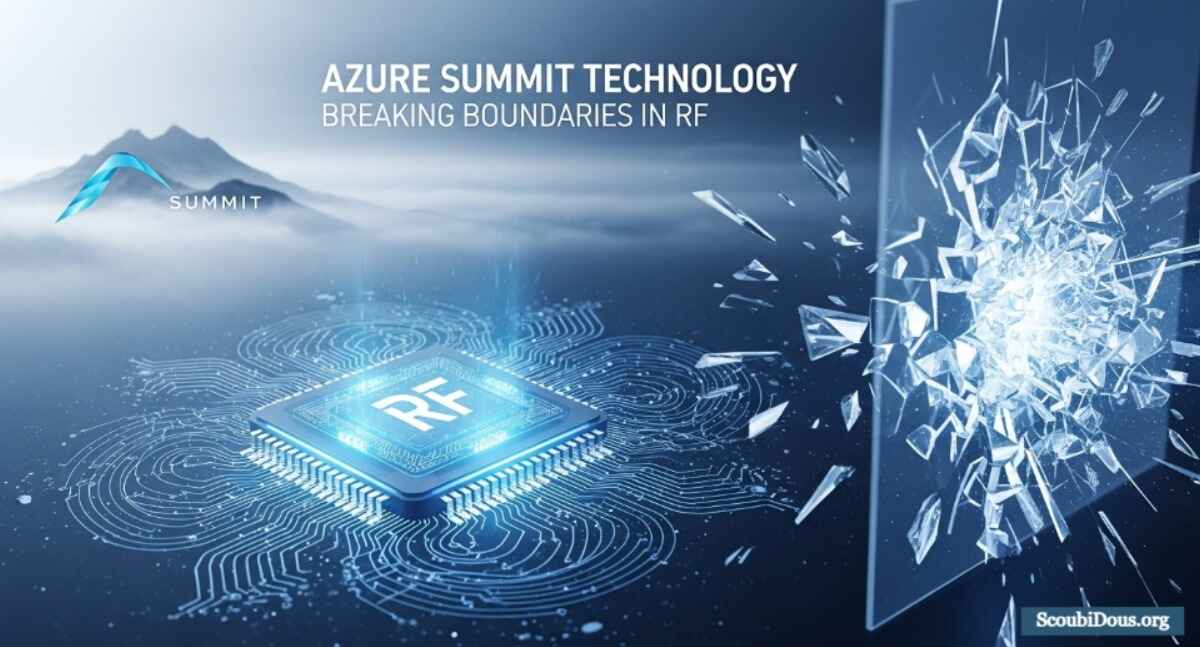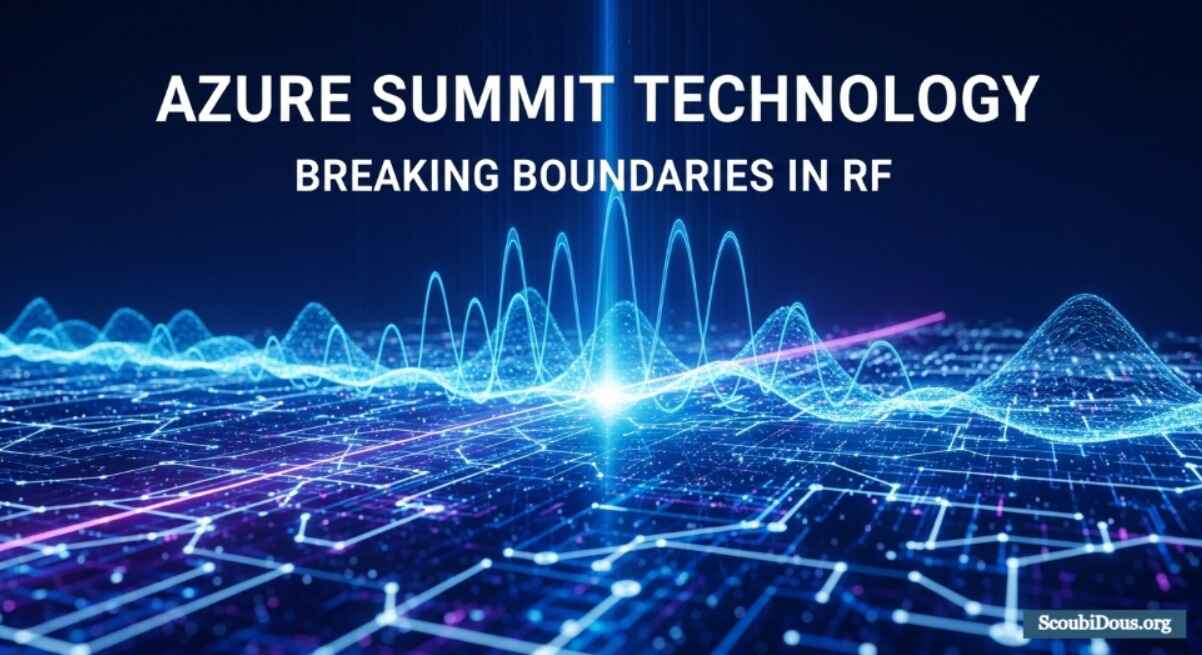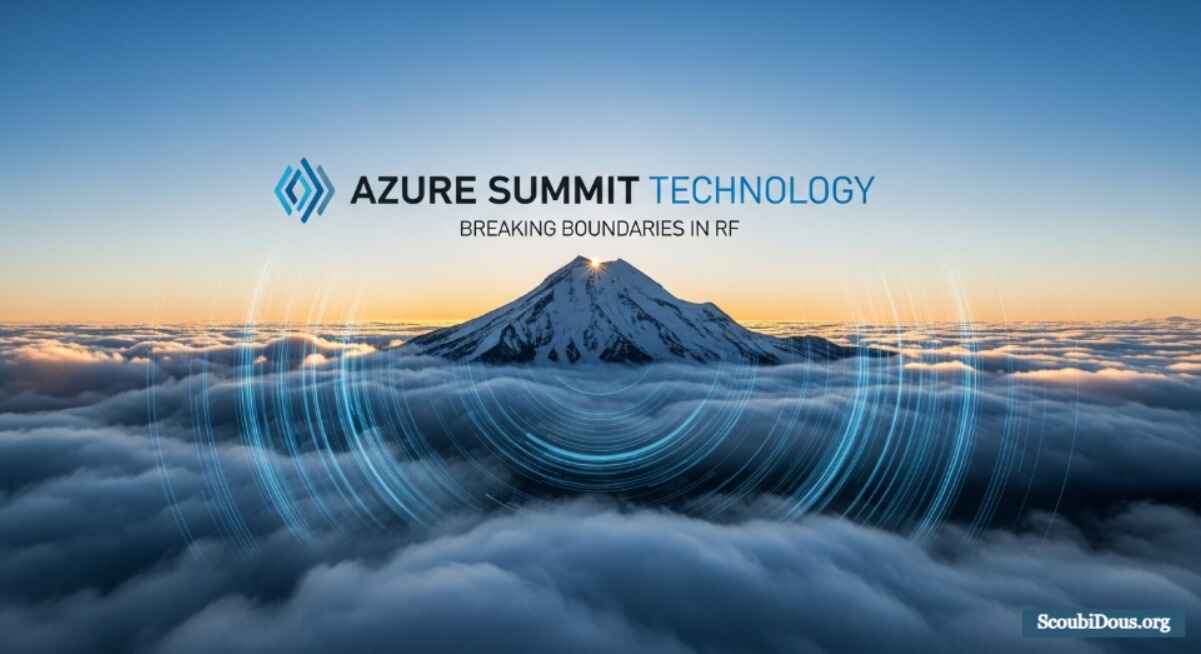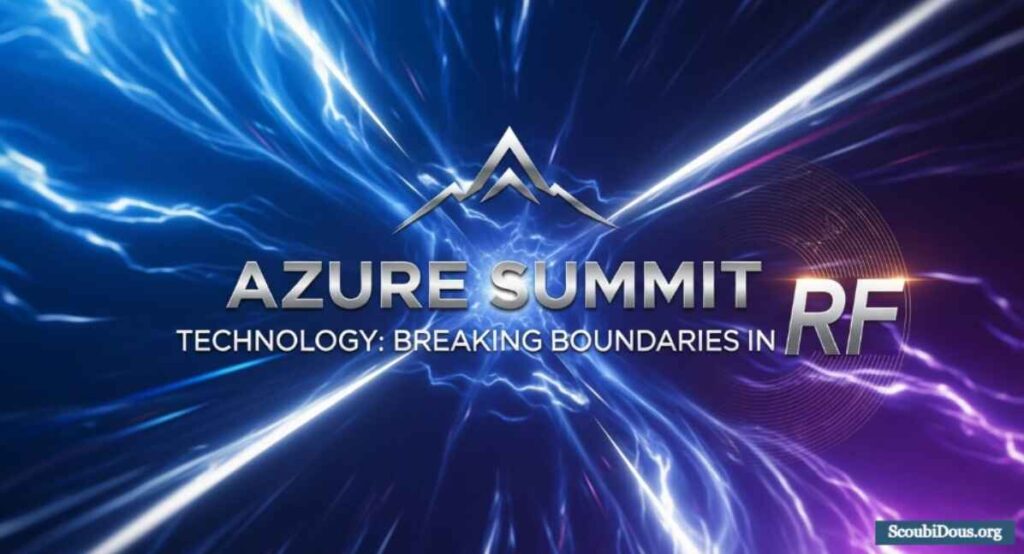Introduction
Imagine a technology company that quietly operates at the heart of national security systems—designing hardware and software that intercepts, locates, and decodes signals across the electromagnetic spectrum. That is Azure Summit Technology.
Though not a household name, this organization plays a pivotal role in domains like electronic warfare, signals intelligence, defense systems, and RF engineering.
In this article, we will explore Azure Summit Technology in depth: its mission, technical capabilities, real-world applications, organizational evolution (including acquisition), and the future landscape.
Whether you’re an RF engineer, defense strategist, or tech enthusiast, this article offers both big-picture insight and technical depth—designed to be accessible yet authoritative.
What Is Azure Summit Technology?

Azure Summit Technology is a specialized engineering company focused on designing high-performance RF (radio frequency) hardware, software-defined technologies, and integrated systems for defense and national security. It develops solutions for signal detection, classification, direction finding (DF), geolocation, and other electromagnetic spectrum applications.
Unlike general-purpose consumer tech firms, Azure Summit operates in a niche but mission-critical space—providing tools that underpin intelligence, surveillance, electronic warfare, and system integration.
Brief History & Recent Milestones
- Azure Summit was founded (circa 2007) as a provider of RF and software-centric technologies supporting platforms such as unmanned aircraft and maritime systems.
- Over time, it became a key contractor for the U.S. Department of Defense and related agencies, winning significant contracts (e.g. Navy systems).
- In September 2024, CACI International Inc. announced plans to acquire Azure Summit Technology in an all-cash deal valued at about $1.275 billion.
- In October 2024, the acquisition officially closed, bringing over 300 Azure Summit employees into CACI and integrating Azure’s capabilities into CACI’s defense offerings
- Azure Summit has been appraised at CMMI Level 3, reinforcing its commitment to mature, consistent engineering processes.
This trajectory underscores the strategic importance of Azure Summit’s technology in national security and advanced systems engineering.
Why Azure Summit Technology Matters

To appreciate the significance of Azure Summit Technology, it helps to understand the broader context of electromagnetic spectrum dominance, defense systems, and signal intelligence.
Spectrum Challenges & Strategic Importance
In modern warfare and intelligence, control of the electromagnetic spectrum is pivotal. Entities must:
- Detect and classify signals (friendly, hostile, or ambient interference)
- Determine direction and origin (direction finding, geolocation)
- Derive actionable intelligence (signal decoding, signatures)
- Defend and counter electronic attacks (jamming, anti-jamming, interference suppression)
Azure Summit’s capabilities provide technical building blocks for those goals.
Positioning & Competitive Edge
Azure Summit’s advantage lies in integrating hardware, firmware, software, and systems engineering:
- Closed-loop signal chains: from antenna and RF front-end to digital processing
- Rapid prototyping and agility: ability to go from concept to fielded systems
- High-performance multi-channel systems: handling many simultaneous signal paths
- Flexible architectures (open standards): modular, scalable, future-proof
These capabilities make Azure Summit a preferred partner in programs of record and defense acquisitions, bridging innovation and deployable systems.
Azure Summit Technology Capabilities in Detail
Below is a breakdown of key technical capabilities, how they interrelate, and real-world relevance.
| Capability | Description | Why It Matters / Application |
| Rapid Prototyping & Proof of Concept | Quickly build and test new designs before full development | Enables fast iteration, validation, and reduces risk in R&D |
| High-Performance Multi-Channel Hardware | Systems that can process many RF channels coherently | Supports complex signal environments, multiple antennas or frequencies |
| FPGA-driven Signal Processing | Use of FPGAs for low-latency real-time data handling | Essential for time-sensitive tasks like direction finding and classification |
| System Integration | Combining diverse components into unified solutions | Ensures that subsystems work together; reduces integration overhead |
| RF Hardware Design & Production | End-to-end design and manufacturing of RF modules | Ensures tighter control, performance, quality, and reliability |
| Modeling & Simulation | Virtual environments to test performance and predict behavior | Reduces field trial cost and improves design before hardware deployment |
| Operational Support & Field Testing | Long-term maintenance, upgrades, and testing under real operational conditions | Increases reliability, adapts to evolving threats |
These capabilities are not siloed—Azure Summit often combines them in complex subsystems that must operate reliably under harsh conditions (temperature, interference, mobility).
Example Systems & Platforms
Here are representative product or system types developed or supported by Azure Summit:
- SABRE: a chassis-based solution (Open VPX) accommodating multiple RF modules.
- SCIMITAR: multi-channel detection and direction-finding systems are especially useful in maritime or UAV contexts.
- BUZZKILL / BUZZSAW: aerial geolocation systems used in airborne surveillance contexts.
- CUTLASS: multi-channel wideband detection systems (e.g., 4-channel detection over 100 MHz to 2 GHz ranges).
- SHENANDOAH: modular microwave assemblies supporting high-power antennas and arrays.
These systems demonstrate how Azure Summit transitions from hardware modules into fully integrated deployments.
Azure Summit Technology in National Security & Defense Applications
Let’s explore how Azure Summit’s technology is used in real-world defense, intelligence, and surveillance missions.
Signal Intelligence (SIGINT) & Electronic Warfare (EW)
- Detection, interception, and classification of signals (e.g. radar, communication links)
- Geolocation and direction-finding to pinpoint sources
- Frequency hopping, spread spectrum, and anti-jamming techniques
- Integration with data analytics, pattern recognition, and AI models
- Countermeasures and defensive signal processing
Azure Summit’s platforms support such use cases by providing low-latency, high-throughput RF front ends and real-time processing pipelines.
Maritime, Airborne & Land Platforms
Because Azure Summit designs systems for mobility:
- Ships: RF systems for surface and subsurface detection, coastal surveillance
- Aircraft / UAVs: lightweight, low-SWaP (Size, Weight, and Power) modules for airborne operations
- Ground / Vehicle-mounted: ruggedized systems for land forces
This flexibility allows the same core engine to adapt across domains.
Case Study: U.S. Navy Contract
Azure Summit was awarded a $697.4 million contract by the U.S. Navy for the Ship’s Signal Exploitation Equipment (SSEE) transition production program. Azure Summit is the prime contractor for Increment F, which involves manufacturing and installing the system on naval vessels. This large-scale, longitudinal commitment underscores trust in Azure’s reliability and maturity.
Organizational Maturity, Quality & Trust

For EEAT-level credibility, it’s not enough to build good tech—you must also build trust, rigorous processes, and quality assurance.
Process Maturity & Certifications
- CMMI Level 3 appraisal: indicates well-defined processes, continuous improvement, and standardization. Azure Summit has been appraised at level 3.
- Compliance with defense, aerospace, and systems engineering standards (e.g. AS9100) is often required for prime programs. Azure Summit references adherence to rigorous engineering standards in “Program of Record Solutions” offerings.
These credentials instill confidence among defense clients and prime contractors.
Acquisition by CACI
When a well-established player like CACI acquires Azure Summit, that implies recognition of Azure’s technological value and trust. CACI’s reputation in defense and government services enhances the authoritative mantle over Azure’s offerings.
The fact that the acquisition was fully executed and integrated suggests due diligence and confidence in Azure’s operations.
Track Record & Client Base
Azure Summit maintains a history of winning substantial contracts across defense domains, including SSEE, Navy systems, and signal processing programs.
Such continuing work under government oversight and scrutiny further validates its trustworthiness.
Strategic Impacts & Future Prospects
Looking forward, what role will Azure Summit Technology play in evolving defense & RF landscapes? Below are trends, challenges, and strategic drivers to watch.
Trends & Emerging Needs
- Spectrum congestion & contested environments: More devices, crowded bands, and adversarial jamming will demand smarter, adaptive systems.
- AI and machine learning integration: Signal classification, anomaly detection, and autonomous decision-making will become more embedded.
- Small, distributed systems: Miniaturization (especially for drone swarms or distributed sensor networks) increases demand for high-performance, low-power modules.
- Networked, multi-domain systems: Interconnected RF systems (sea, air, space) require interoperable architectures.
- Software-defined radio (SDR) & reconfigurability: Systems must support in-field updates, frequency agility, and adaptive behavior.
Azure Summit is well placed to ride these trends, because many of its systems are modular, scalable, and software-driven.
Challenges & Risks
- Rapid obsolescence: RF and signal tech evolves fast; staying ahead requires constant R&D.
- Security & trust concerns: Defense clients demand extreme assurance: hardware integrity, supply chain security, anti-tamper.
- Integration complexity: Interfacing with legacy systems and wide defense ecosystems poses engineering friction.
- Budget cycles & regulation: Government procurement can be slow or unpredictable; regulatory constraints (export controls, ITAR) may limit markets.
Success will depend on continued innovation, robust processes, strong partnerships, and forward anticipation of threat vectors.
Best Practices & Recommendations for Stakeholders

If your organization (defense contractor, integrator, or researcher) is engaging with or considering leveraging Azure Summit Technology, here are the recommended principles and strategies.
- Clarify the mission requirements early
Define detection ranges, latency targets, channel counts, and integration constraints up front.
- Favor modularity & open architecture
Use systems that allow upgrades, swapping modules, and future scalability rather than monolithic designs.
- Embrace simulation & virtual testing
Use modeling and simulation to validate design choices before hardware commitment.
- Invest in field testing & validation
Real-world performance (signal interference, environmental stresses) may differ from lab assumptions.
- Manage security across the supply chain
Ensure all modules and firmware adhere to security norms (trusted boot, encryption, tamper detection).
- Plan for lifecycle support & upgrades
Fielded systems must evolve; plan maintenance, updates, and obsolescence paths.
- Maintain documentation & traceability
Defense systems require traceability for performance, audits, and certification.
By adhering to these practices, system integrators and clients can maximize the return on investment when deploying Azure Summit-based subsystems.
Conclusion
Azure Summit Technology may not be widely known in consumer circles, but in defense and intelligence communities, it is a critical enabler of electromagnetic domain dominance.
From its inception in the mid-2000s to its acquisition by CACI in 2024, the company has built a reputation for combining hardware, firmware, software, and systems integration in the RF and signal-processing domain.
Its strengths lie not just in building complex subsystems, but in maintaining process maturity, successful defense contracts, and real-world relevance under high-stakes conditions.
As threats evolve—spectrum congestion, jamming, distributed networks, AI-enabled signals—the demand for agile, adaptable systems will only grow.
Azure Summit’s modular, software-driven architecture positions it well for those changes, though it must continuously innovate, validate, and secure to stay ahead.
For system integrators, defense agencies, or tech strategists, the lesson is clear: investing in robust, modular, and secure signal-processing architectures is no longer optional but essential.
When such architectures are backed by experienced firms with strong engineering process credibility and a track record, the risk is reduced and mission success is more assured.


